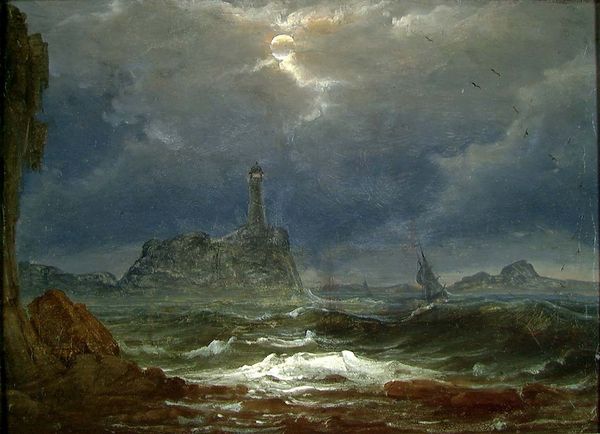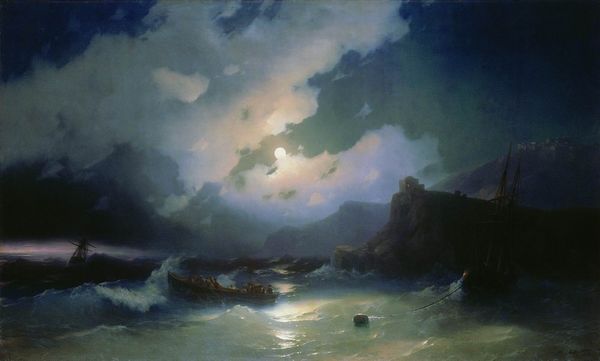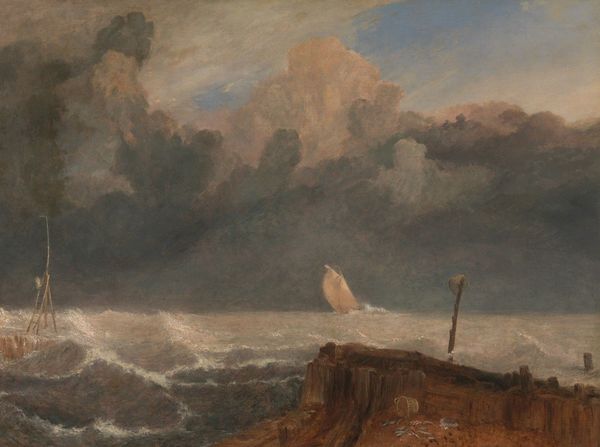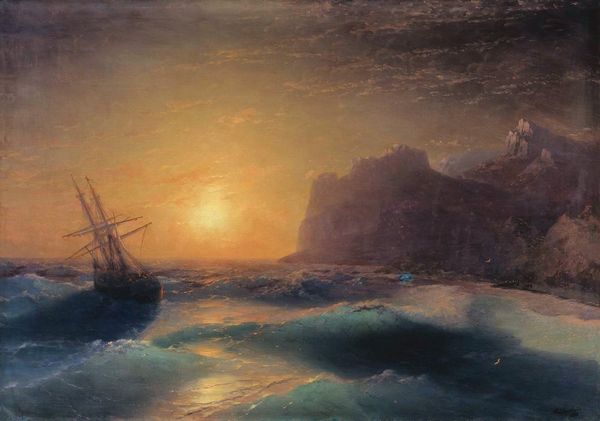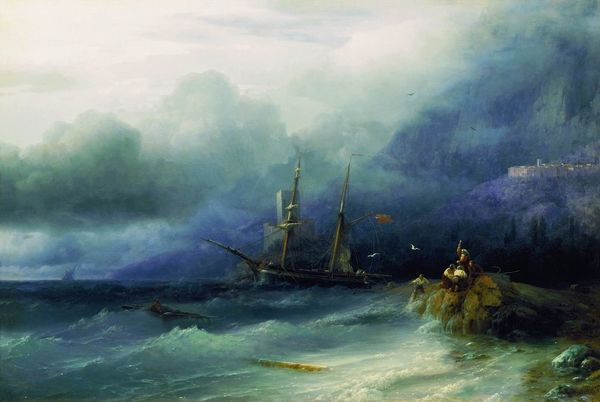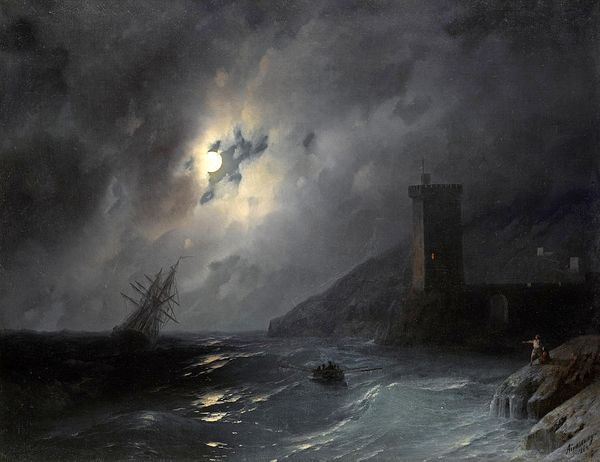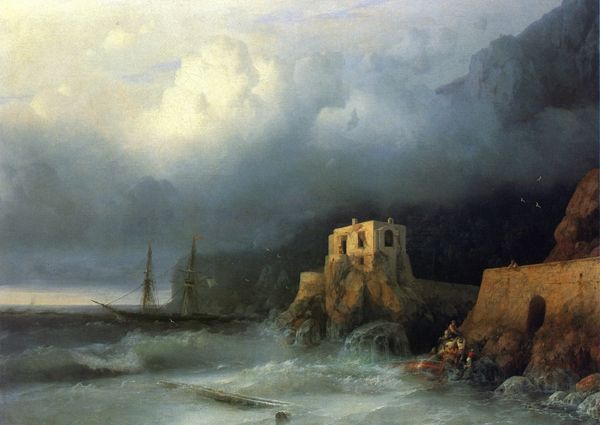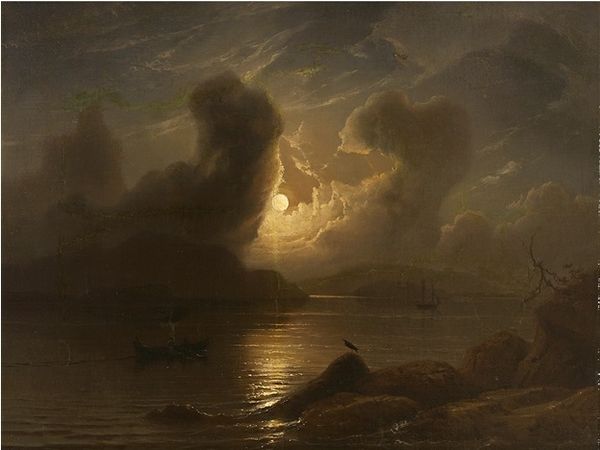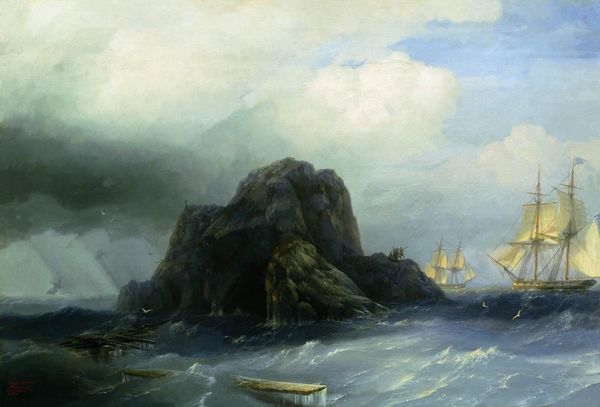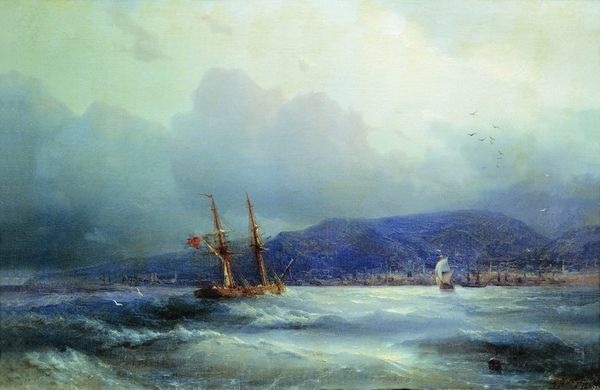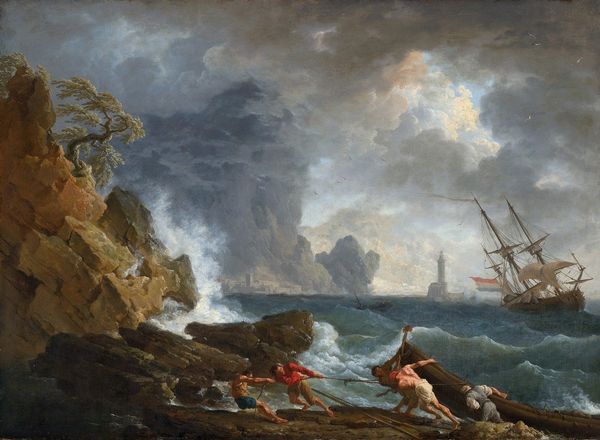
Dimensions: 59 x 83 cm
Copyright: Public domain
Editor: Here we have Ivan Aivazovsky's "Seascape" from 1856, created with oil paints. There’s a strong sense of drama, almost theatrical, in the contrast between light and shadow. It’s immediately striking, but what deeper structures am I missing? What do you see in this piece? Curator: Immediately, the formal arrangement captures the dynamism of nature. Note how the artist employed chiaroscuro to accentuate the ocean’s turmoil under a moonlit sky. Do you observe how the diagonal thrust of the waves contrasts with the more stable, horizontal lines of the horizon? This juxtaposition creates a visual tension, contributing to the sublime feeling. Editor: I see what you mean. It is about more than just a storm, then. The opposition suggests conflict. Is it mirrored on the right of the frame? Curator: Precisely. The composition is almost symmetrical; the looming land mass mirroring the wrecked vessel. We find structural parallels in how Aivazovsky treats these forms using highlights and shadows to emphasize their relative size. Editor: So, the painting’s meaning arises through how these forms play against each other… Curator: Exactly. It is a discourse of artistic components to reflect the interplay of forces – nature and humanity, chaos and structure, light and darkness. It isn’t necessarily about narrative; but about experiencing these dialectics. Editor: I'm beginning to appreciate how the formal elements create this sense of impending doom but in a controlled artistic space. I will approach paintings with greater appreciation of structure. Curator: Indeed, understanding the compositional mechanics enables deeper interpretation. We focused today only on this painting. Further study will allow you to understand better how the principles discussed affect wider schools of art and art production.
Comments
No comments
Be the first to comment and join the conversation on the ultimate creative platform.
